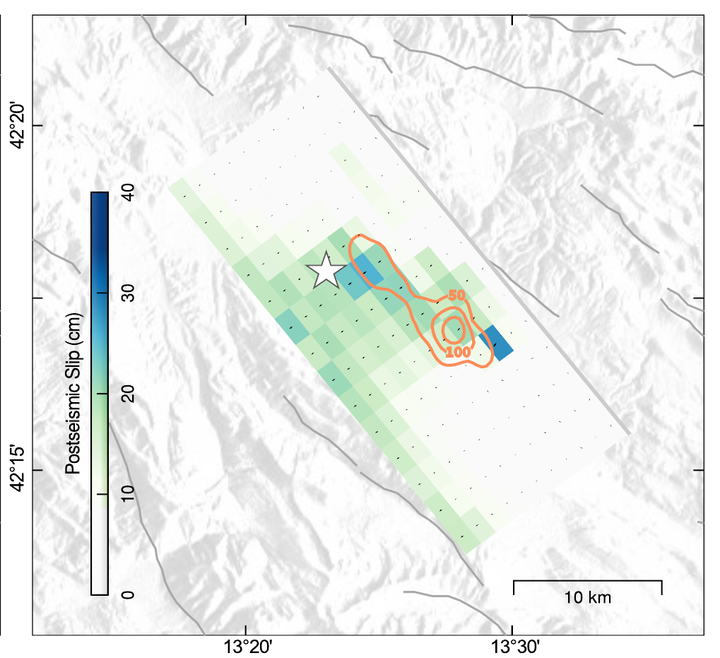Accounting for uncertain fault geometry in earthquake source inversions--II: application to the M w 6.2 Amatrice earthquake, central Italy
 We show that a small error in the estimation of the fault geometry, here the dip angle, may lead to large errors in the fault slip estimation (Left). For the most part, this issue can be circumvent acknowleding our uncertainties in the given parameter (Right). Image credit: [T.Ragon, PhD Thesis]
We show that a small error in the estimation of the fault geometry, here the dip angle, may lead to large errors in the fault slip estimation (Left). For the most part, this issue can be circumvent acknowleding our uncertainties in the given parameter (Right). Image credit: [T.Ragon, PhD Thesis]
Abstract
Our understanding of earthquake sources is limited by the availability and the quality of observations and the fidelity of our physical models. Uncertainties in our physical models will naturally bias our inferences of subsurface fault slip. These uncertainties will always persist to some level as we will never have a perfect knowledge of the Earth’s interior. The choice of the forward physics is thus ambiguous, with the frequent need to fix the value of several parameters such as crustal properties or fault geometry. Here, we explore the impact of uncertainties related to the choice of both fault geometry and elastic structure, as applied to the 2016 Mw 6.2 Amatrice earthquake, central Italy. This event, well instrumented and characterized by a relatively simple fault morphology, allows us to explore the role of uncertainty in basic fault parameters, such as fault dip and position. We show that introducing uncertainties in fault geometry in a static inversion reduces the sensitivity of inferred models to different geometric assumptions. Accounting for uncertainties thus helps infer more realistic and robust slip models. We also show that uncertainties in fault geometry and Earth’s elastic structure significantly impact estimated source models, particularly if near-fault observations are available.